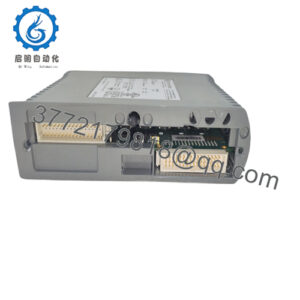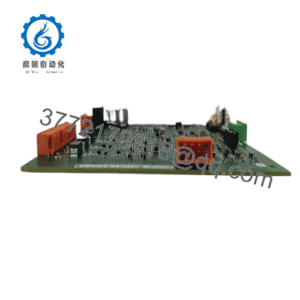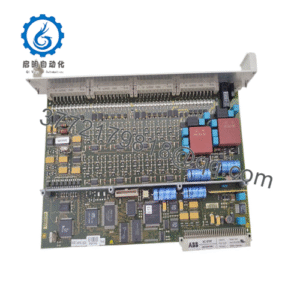Description
| Model Number | TPMC815-11 |
| Brand | GE (General Electric) |
| Type | Industrial Controller Module (Mark VIe Compatible) |
| Processor | 4-core 2.2GHz Industrial-Grade CPU |
| Memory | 8GB DDR4 RAM (expandable to 16GB), 64GB Industrial SSD |
| Input/Output (I/O) Support | Up to 512 Digital I/O, 256 Analog I/O (via backplane) |
| Operating Temp Range | -25°C to +70°C (-13°F to +158°F) |
| Mounting Style | 35mm DIN Rail (via GE Mark VIe Chassis) |
| Dimensions | 50mm (W) x 180mm (H) x 210mm (D) |
| Weight | 780g (1.72 lbs) |
| Interface/Bus | GE Proprietary Backplane, Dual Redundant Ethernet (10/100/1000Base-T) |
| Compliance | CE, RoHS, UL 508, IEC 61131-2, ATEX Zone 2 |
| Supported Protocols | GE SRTP, Modbus TCP, PROFINET, OPC UA |
| Typical Power Draw | 15W (standby) / Up to 35W (full load) |
| Control Logic Support | IEC 61131-3 (LD, FBD, ST, IL, SFC) |
| Redundancy Features | Dual Ethernet, Hot-Swap Memory, Redundant Power Input |
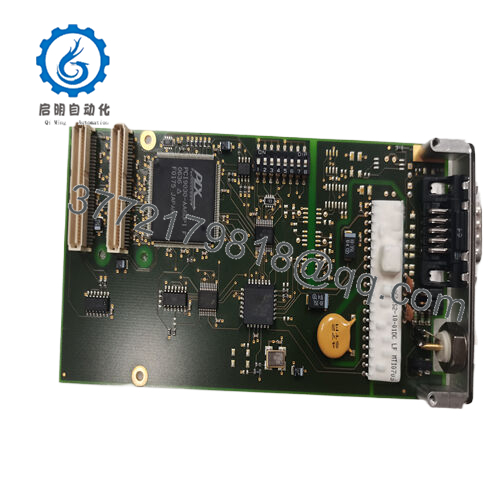
TPMC815-11
The GE TPMC815-11 sits at the core of the control layer in the automation stack, functioning as a bridge between distributed I/O devices and GE’s central control software (like CIMPLICITY). It features a 4-core industrial-grade processor optimized for real-time control tasks, capable of executing 10,000+ logic instructions per millisecond—fast enough to handle the most demanding control loops, such as those in gas turbine fuel regulation or semiconductor wafer processing. Unlike basic controller modules, it supports dual-redundant Ethernet ports for communication, ensuring uninterrupted data transmission even if one network path fails—a critical feature for applications where controller downtime could lead to process shutdowns.
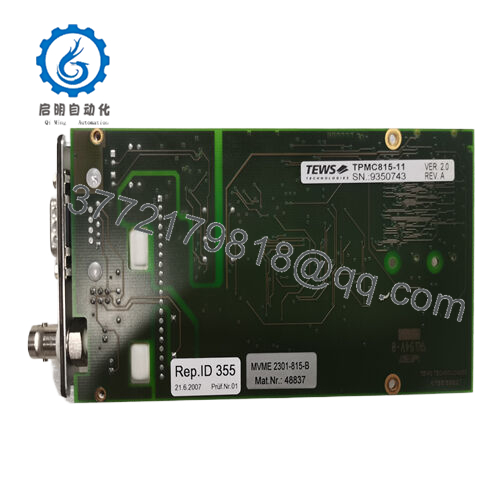
TPMC815-11
A key advantage of the GE TPMC815-11 is its broad protocol support: it natively works with GE’s SRTP (Simplified Remote Terminal Protocol) for seamless integration with Mark VIe I/O, as well as open standards like Modbus TCP and PROFINET for connecting to third-party sensors, drives, and HMIs. It also includes 8GB of DDR4 RAM (expandable to 16GB) and a 64GB industrial-grade SSD, providing ample storage for large control programs, historical data logs, and firmware updates. Additionally, it supports hot-swap functionality for critical components like memory modules, allowing technicians to upgrade or replace parts without shutting down the entire control system—essential for 24/7 operations like wastewater treatment plants or refineries.
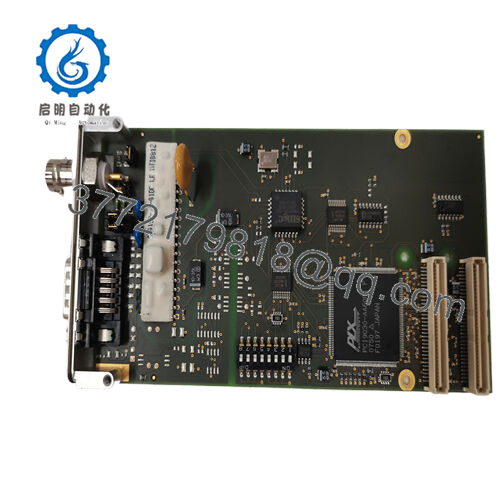
TPMC815-11
Main features and advantages:
Choosing the GE TPMC815-11 delivers transformative value by enhancing control system performance and flexibility. Its ruggedized design is engineered to withstand the rigors of industrial environments: it resists vibration up to 5g (critical for machinery-mounted control cabinets in automotive plants) and operates in 90% non-condensing humidity, eliminating the need for specialized shock-absorbing or climate-controlled enclosures. This durability translates to a 60% reduction in unplanned controller maintenance compared to standard modules, cutting long-term operational costs and minimizing process disruptions.
The module’s processing power and expandability further drive efficiency. With its 4-core CPU, the GE TPMC815-11 can handle multiple concurrent control loops without lag—for example, managing both temperature regulation and flow control in a chemical reactor while logging data to a central historian. Its expandable memory allows teams to add new control logic (like batch sequencing or predictive maintenance triggers) as operations grow, avoiding the need to replace the entire controller. For multi-site operations, its compatibility with GE’s Predix platform enables remote monitoring of controller health, letting engineers track CPU usage, memory load, and network performance in real time—identifying potential bottlenecks before they impact operations. Additionally, its support for IEC 61131-3 programming standards means existing control engineers can leverage their expertise in ladder logic (LD) or function block diagram (FBD) to program the module, avoiding the need for specialized training.
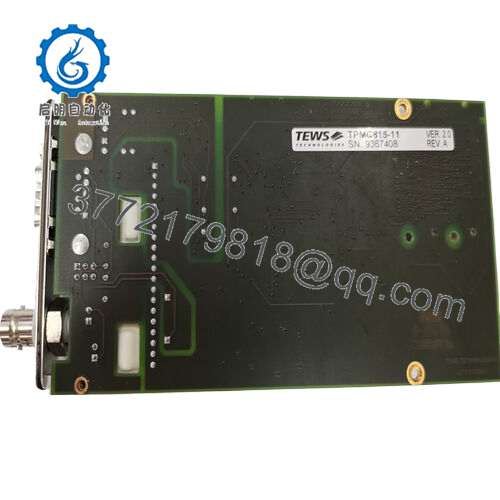
TPMC815-11
Application fields:
The GE TPMC815-11 is deployed across industries where precise, real-time control is non-negotiable. In power generation, it’s used to control gas and steam turbine auxiliary systems, processing data from hundreds of sensors to adjust fuel flow, lubrication pressure, and cooling system operation—ensuring turbines run at peak efficiency while complying with grid frequency requirements. In pharmaceutical manufacturing, its fast processing speeds enable precise control of mixing ratios and temperature in continuous production lines, reducing product variability and ensuring compliance with FDA regulations for process documentation.
In pulp and paper mills, the GE TPMC815-11 manages the complex control loops for paper machine speed, pulp consistency, and dryer temperature, maintaining uniform paper thickness and quality. All these environments demand fast response times, resistance to harsh conditions (like high humidity in paper mills or temperature swings in power plants), and scalability—requirements the GE TPMC815-11 meets with its powerful processor, rugged design, and expandable memory. For safety-critical applications like nuclear power plant auxiliary systems, it acts as a secondary control layer, ensuring backup functionality if primary controllers fail.

TPMC815-11
Related products:
GE TPMC815-10 – Lower-memory variant (4GB RAM, 32GB SSD) for less demanding control tasks (e.g., small-scale water treatment plants).
GE TPMC815-12 – High-performance version (6-core CPU, 16GB RAM) for large-scale automation (e.g., multi-turbine power plants).
GE TPMC815-11-R – Redundant controller model (dual CPU) for zero-downtime systems (e.g., emergency shutdown systems in refineries).
GE TPMC805-11 – Legacy Mark VI-compatible version for teams upgrading from older GE control systems without full Mark VIe integration.
GE TPMC815-11-ISO – Isolated I/O version for environments with extreme electrical interference (e.g., welding facilities, high-voltage substations).
GE TPMC815-11-W – Wide-temperature variant (-40°C to +75°C) for outdoor or cold-storage applications (e.g., Arctic oil pipelines).
GE TPMC815-11-E – Enhanced cybersecurity model (IEC 62443-4-2 compliance) for critical infrastructure like utility grids.
GE TPMC815-11-EX – ATEX Zone 1-rated version for explosive environments (e.g., oil and gas upstream production facilities).
Installation and maintenance:
Before installing the GE TPMC815-11, verify that your GE Mark VIe control system has firmware version V7.0 or higher—older versions may not support the module’s full processing capabilities or redundant Ethernet features. Confirm that the connected I/O devices (both GE and third-party) are compatible with the module’s supported protocols (e.g., Modbus TCP for non-GE sensors) and that the total number of I/O points does not exceed the module’s 768-point limit. Inspect the backplane connector for bent pins or corrosion, as poor connections can cause intermittent data loss or controller unresponsiveness. Also, ensure the chassis has adequate cooling: the module generates up to 35W of heat, so verify that chassis fans are operational and airflow paths are unobstructed.
For ongoing maintenance, review the controller’s performance metrics (CPU usage, memory load, network latency) via the Mark VIe HMI weekly—target CPU usage should remain below 70% during peak operation to avoid lag. Check the module’s LED status indicators biweekly: steady green means normal operation, blinking green signals a firmware update in progress, amber indicates a non-critical warning (e.g., low SSD space), and solid red means a critical fault (refer to the GE TPMC815-11 user manual for fault code details). Back up the controller’s configuration and control logic monthly to a secure server, and test restore procedures quarterly to ensure data recoverability in case of SSD failure. Once per year, clean the module’s ventilation slots with compressed air to remove dust buildup, which can impede cooling and shorten component lifespan.
Other GE product models:
GE PQMII-T20-C
GE DS200UCPBG6AFB
GE 469-P1-HI-A20-T
GE 489-P5-HI-A20-E-H
GE IS220PHRAH1A
GE IS215UCCCH4A
GE IS200AEPGG1AAA
GE IS420UCSBH1A
GE 369-LO-0-M-0-0-0-E
GE ML1600-HI-XX-A2-A4-X
GE IS220PRTDH1B
GE IS200SRTDH2ACB
GE IS420PUAAH1A
GE IC698CPE030
GE IS220UCSAH1A
GE V7768-320000
GE 705-1512-01
GE IC754VGL06CTD ES0622
GE IC698CRE040-HN
GE MIVII1000E00HI00
GE 745-W2-P5-G5-LO-A-L-R-E
GE IS220PDIOH1A
GE IS200VVIBH1C

 WhatsApp: +86 16626708626
WhatsApp: +86 16626708626 Email:
Email:  Phone: +86 16626708626
Phone: +86 16626708626